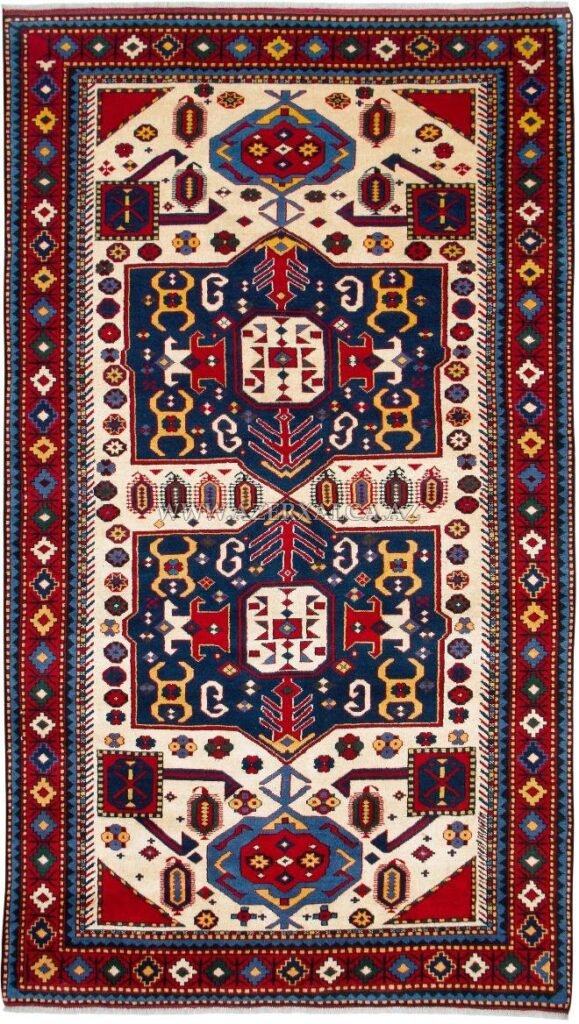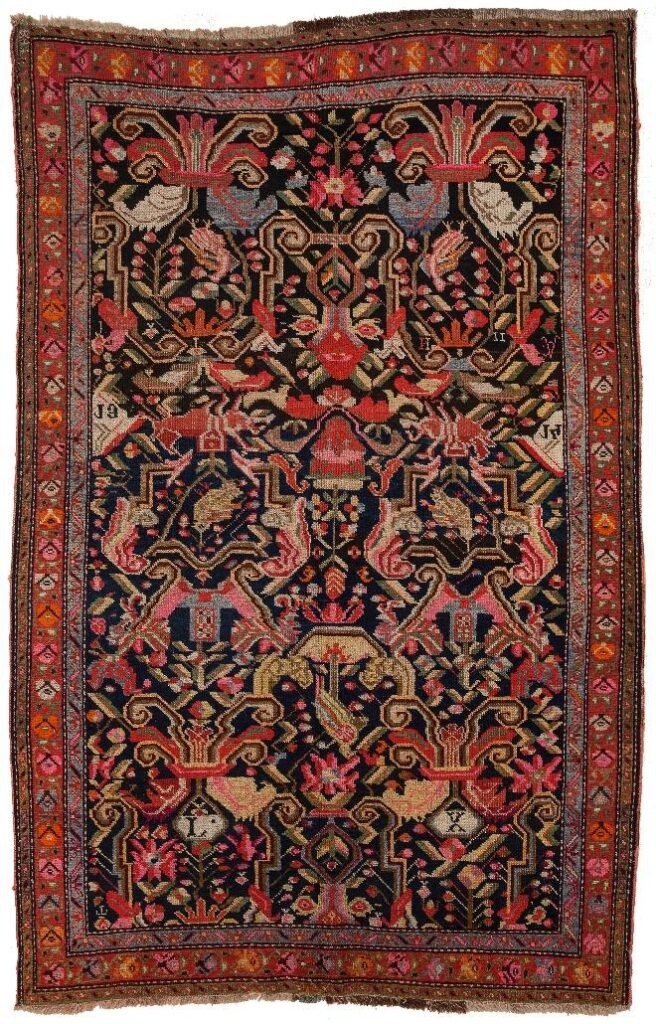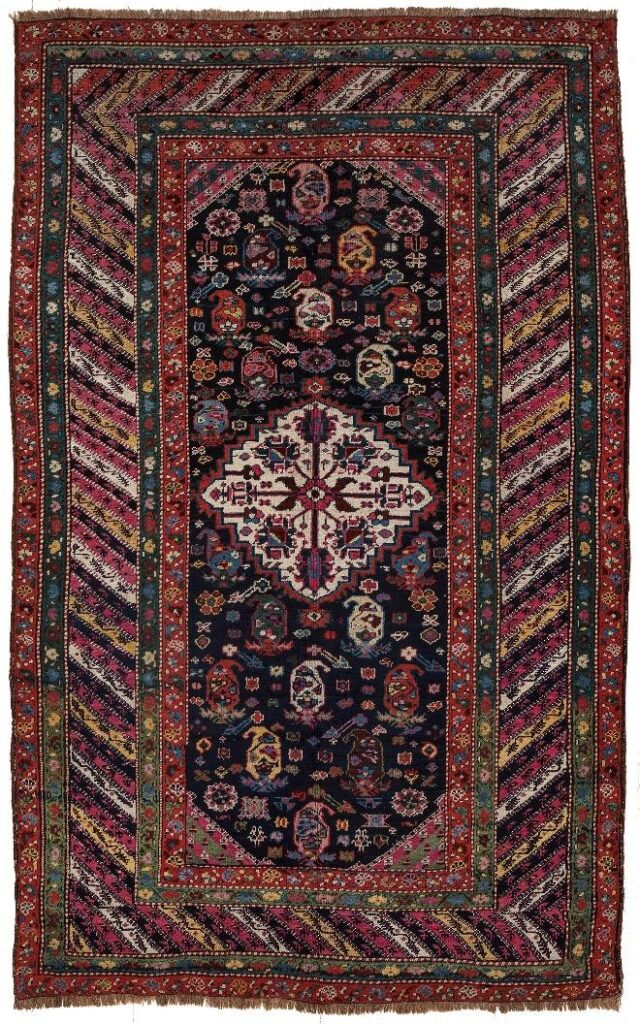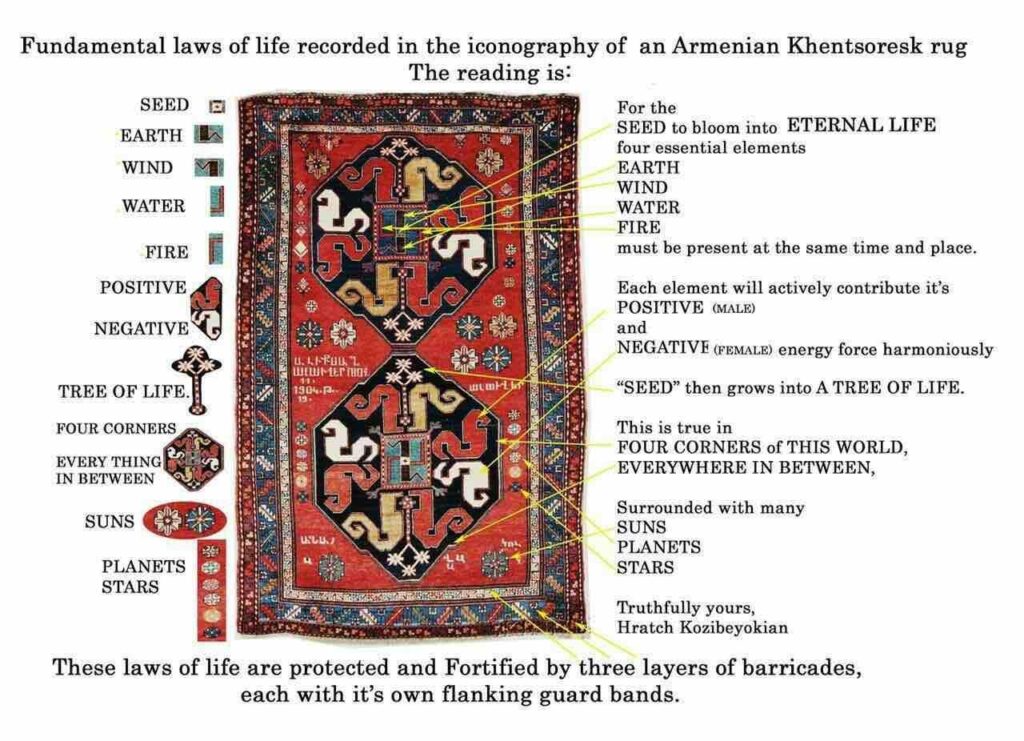Karabagh Rugs
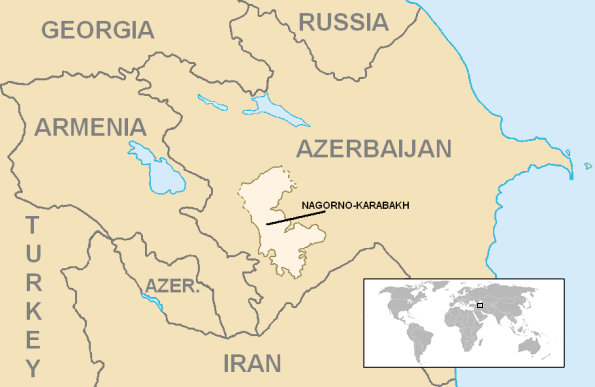
If completely Persian, Karabagh would mean ‘The Grand Garden’, but if a combination of Turkish and Persian, it would mean ‘The Black Garden’.
Also Romanized as ‘Karabakh’ and ‘Qarabagh’, this is a landlocked mountainous region located south of Armenia, west of Azerbaijan Republic near Ganja, and north of Araxes which is the Iranian border.

Formerly a Persian Khanate, in 1813, under the terms of the Treaty of Gulistan, Karabagh was lost by the Persian Crown, Fath Ali Shah Qajar, to the Russian Emperor, Tsar Alexander I. After the collapse of the Soviet Union, the region has become the biggest matter of conflict between Armenia and Azerbaijan Republics.
The weave tradition of the area has continued for millenniums, receiving continuously fresh airs of coming nomads and changing city-styles.
Benefited by Armenian, Turkic, Kurdish, Tat and Georgian traditions, Karabagh claims lots of widely-used Caucasian motifs and designs, according to the antique pieces remained.
Karabagh also shares the Persian royal and city-style heritages. Safavid Shahs of Tabriz and Isfahan profited from a monopoly on silk production in the region, and royal workshops were established there.
Shusha, the capital of Karabagh, was a big weaving center during the 18th, 19th and 20th centuries. Under Russians the production increased largely and exporting to the West became much easier.
Karabagh’s quality of weave, wool and dyeing proved by time. Actually a good number of antique Karabaghs remained in proper condition.
Technical aspects and the structure of Karabagh Rugs

Karabagh’s foundation is completely woolen. Long-piled and fleshy. The wool used is thick and durable.
Knots are symmetrical (Turkic) with an average density of 65 per square inch, which is coarser than a typical Caucasian piece. Weave tend to be more like the pieces made down the Araxes than do those made in other parts of the Caucasus.
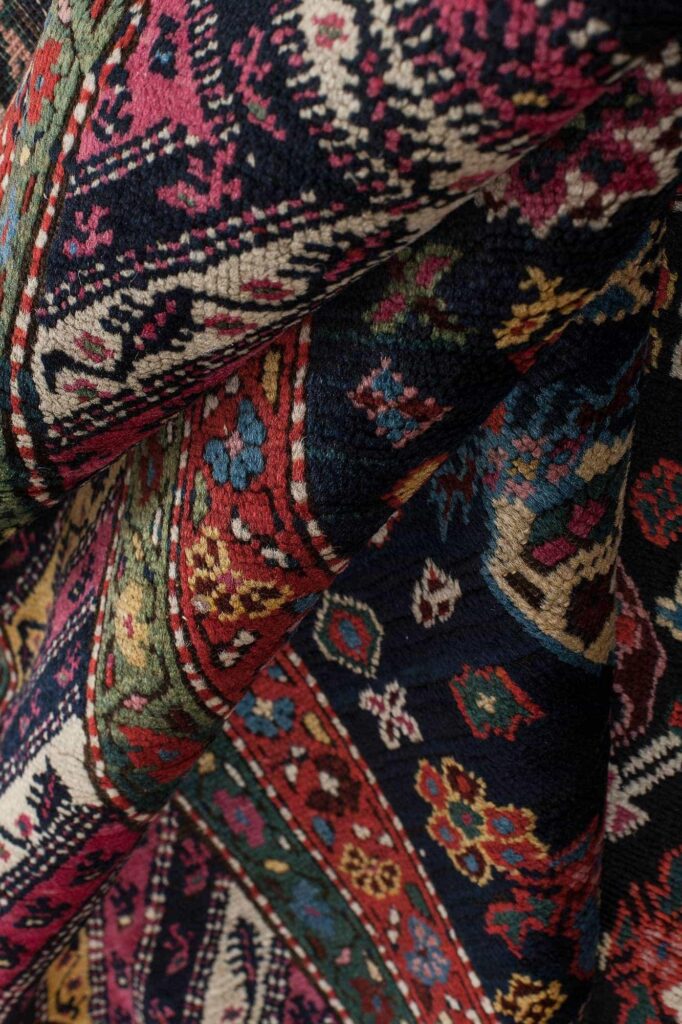
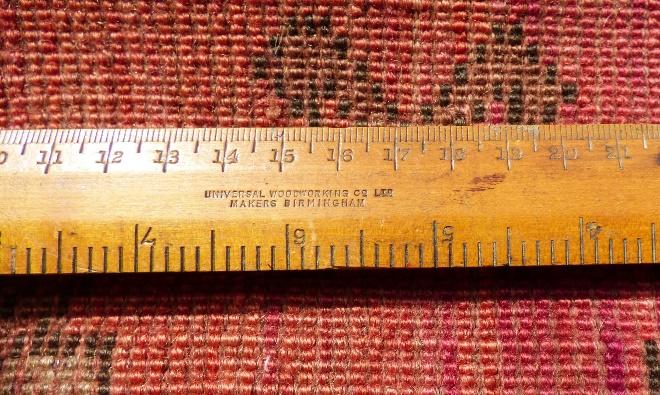
Dyeing and painting of Karabagh rugs
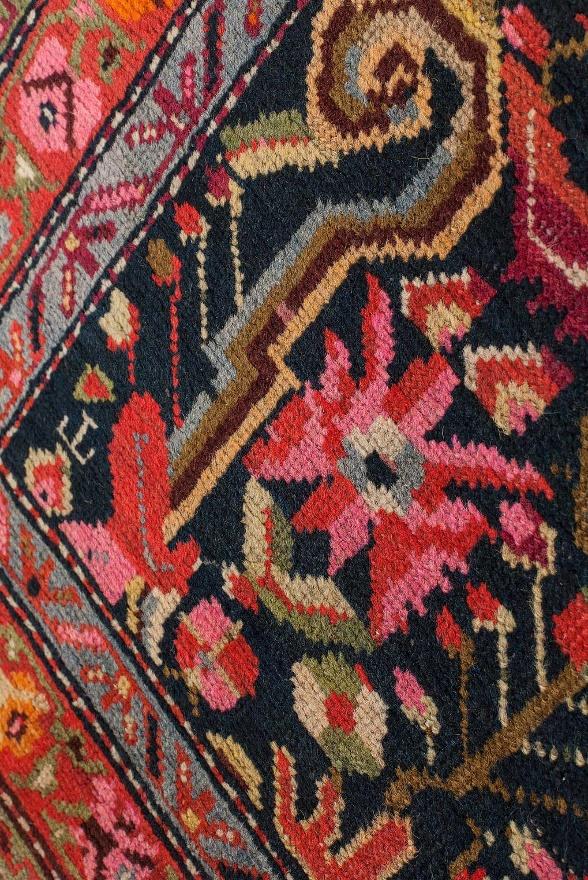
Indigo and rosy dominant Karabagh palette. The latter is a deep rosy obtained from madder’s root and the former tend to midnight shades.
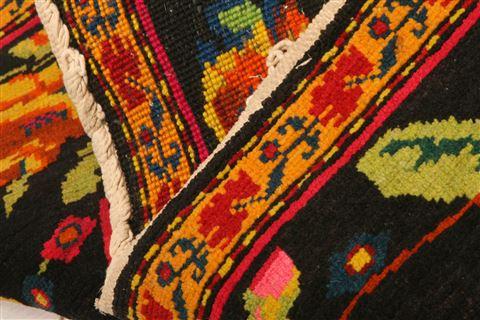
Secondary palette consisted of golden camel, yellow and saffron; olive, grass and jade; crimson, purple and pink; and blues: from light indigo to azure.
Designs and patterns of the Karabagh rugs
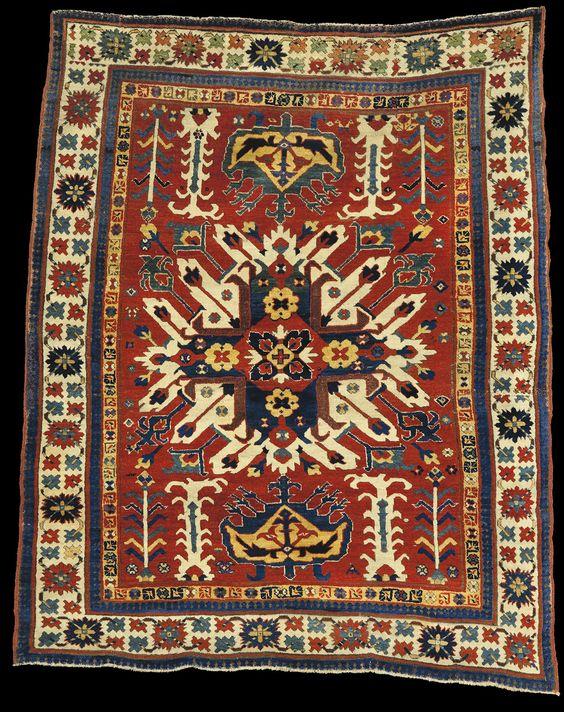
Generally, Karabagh designs tend to be intricate. They are full of delightful details. Lots of Persian floral designs have their geometric variant here.
Chelaberd Karabagh may be the most famous design attributed to Karabagh. It is a schematic representation of a double headed eagle with outstretched wings and claws. Chelaberd serves as medallion in double-medallioned rugs or singly in square-shaped ones.
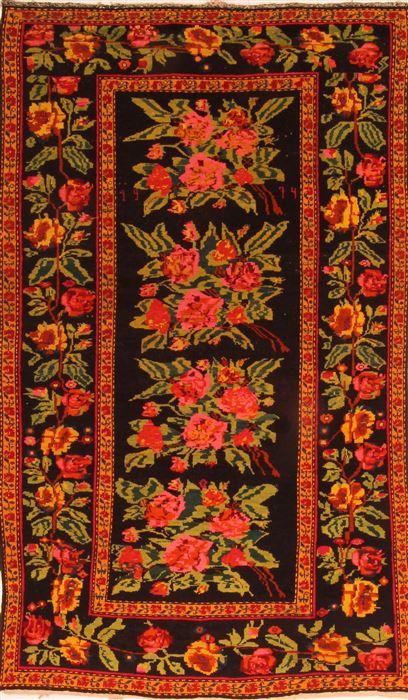
A large dented lozenge enclosed by four hooked brackets make a common Karabagh design, called Kasim Ushag, used usually in area rugs.
Long carpets and runners chiefly planned with Lampa design which is a columnar arrangement of medallions. Typically, eight-lobed medallions alternate with cartouches.
